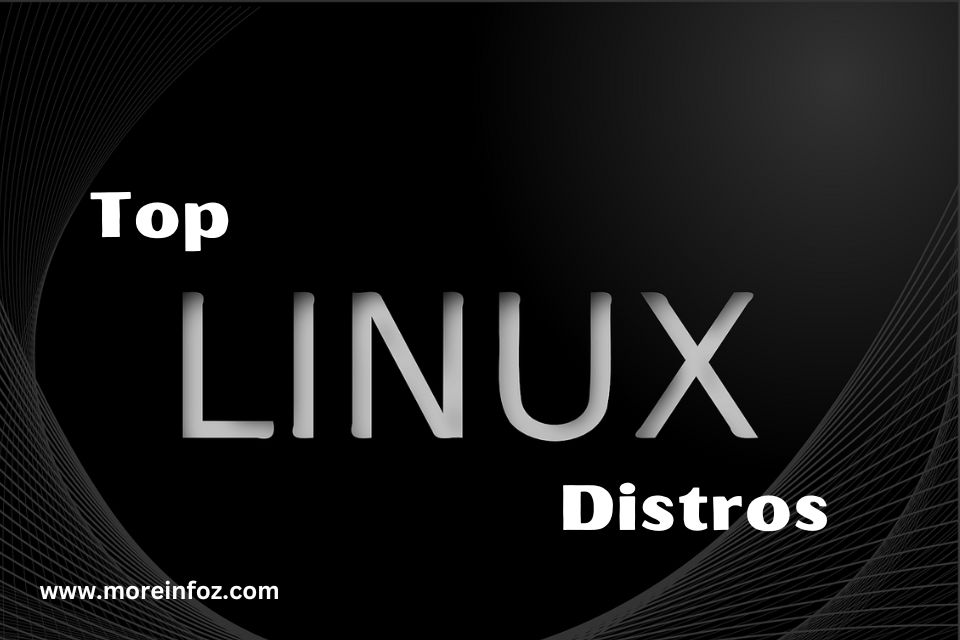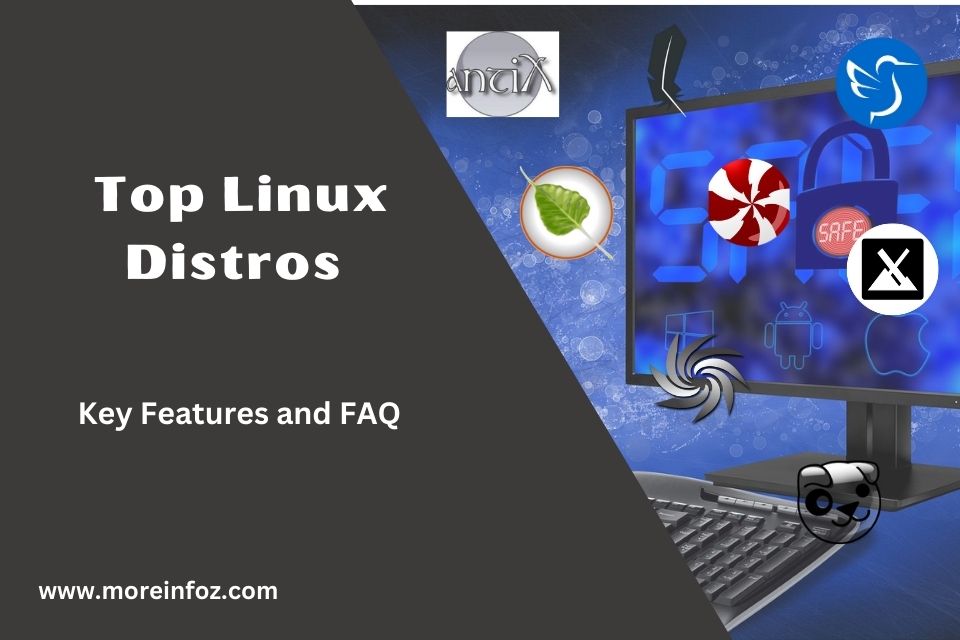If you have an older or low-end computer with limited hardware resources, choosing the right Linux distribution is essential to ensure smooth performance and a satisfying user experience. Many lightweight Linux distros are specifically designed to run on low-end computers, providing a great alternative to resource-intensive operating systems. In this article, we’ll introduce you to the top Linux distros for low-end computers that will help you breathe new life into your aging hardware.

1. Lubuntu
Lubuntu is a popular lightweight Linux distribution based on Ubuntu. It uses the LXQt desktop environment, which is known for its low resource usage and minimalistic design. Lubuntu is an excellent choice for low-end computers, offering a familiar Ubuntu experience without sacrificing performance.
Key Features:
- LXQt desktop environment
- Based on Ubuntu, providing access to a vast software repository
- Low system requirements
2. Puppy Linux
Puppy Linux is a unique lightweight Linux distro that is designed to run entirely from RAM, resulting in exceptional performance even on low-end hardware. It is a small-sized distribution, which makes it perfect for older computers with limited storage. Puppy Linux also includes a wide range of pre-installed applications, making it a highly functional operating system.
Key Features:
- Runs entirely from RAM, providing exceptional performance
- Wide range of pre-installed applications
- Small distribution size
3. Linux Lite
Linux Lite is a lightweight Linux distribution based on Ubuntu, designed to provide a user-friendly experience on low-end computers. It uses the Xfce desktop environment, which is highly customizable and resource-friendly. Linux Lite is easy to install and includes a range of pre-installed applications, making it a great choice for beginners.
Key Features:
- Xfce desktop environment
- Easy to install and use
- Range of pre-installed applications
4. MX Linux
MX Linux is a popular lightweight Linux distribution based on Debian. It uses the Xfce desktop environment, which is known for its low resource usage and customization options. MX Linux is highly stable and features a range of pre-installed applications, making it a great choice for both beginners and advanced users.
Key Features:
- Xfce desktop environment
- Based on Debian, providing access to a vast software repository
- Highly stable
5. Bodhi Linux
Bodhi Linux is a minimalistic and lightweight Linux distribution based on Ubuntu. It uses the Enlightenment desktop environment, which is highly customizable and resource-efficient. Bodhi Linux is designed to be fast and responsive, providing a great user experience on low-end hardware.
Key Features:
- Enlightenment desktop environment
- Minimalistic design
- Highly customizable
6. AntiX
AntiX is a lightweight Linux distribution based on Debian, designed to run on older and low-end hardware. It uses the IceWM window manager, which is highly customizable and resource-friendly. AntiX is highly customizable and provides access to a vast software repository.
Key Features:
- IceWM window manager
- Highly customizable
- Access to a vast software repository
7. Peppermint OS
Peppermint OS is a lightweight Linux distribution designed for web-centric computing on low-end hardware. It uses the Xfce desktop environment, which is highly customizable and resource-friendly. Peppermint OS includes a range of web applications and is designed to integrate seamlessly with cloud-based services.
Key Features:
- Xfce desktop environment
- Designed for web-centric computing
- Seamless integration with cloud-based services
8. SparkyLinux
SparkyLinux is a lightweight Linux distribution based on Debian, designed for both low-end and high-end hardware. It uses the Openbox window manager, which is highly customizable and resource-efficient. SparkyLinux is highly stable and provides access to a vast software repository.
Key Features:
- Openbox window manager
- Highly stable
- Access to a vast software repository
Conclusion
Choosing the right Linux distribution for your low-end computer can make all the difference in terms of performance and user experience. The above-listed distros offer a range of lightweight and resource-friendly options to breathe new life into your aging hardware. Whether you’re a beginner or an advanced user, there’s a Linux distro on this list that will meet your needs. So, why not try one today and see the difference for yourself?
Frequently Asked Questions and Answers

- What is a Linux distribution?
A Linux distribution is an operating system based on the Linux kernel and bundled with various software packages and tools.
- What is a lightweight Linux distribution?
A lightweight Linux distribution is a Linux distribution designed to run efficiently on low-end hardware with limited resources.
- Why should I use a lightweight Linux distribution?
Using a lightweight Linux distribution can help revive aging hardware and provide a better user experience on low-end computers with limited hardware resources.
- What are some popular lightweight Linux distributions?
Some popular lightweight Linux distributions include Lubuntu, Puppy Linux, Linux Lite, MX Linux, Bodhi Linux, and AntiX.
- What is the minimum system requirement for lightweight Linux distributions?
The minimum system requirement for most lightweight Linux distributions is usually 256MB to 1GB of RAM and 2GB to 10GB of storage.
- Can I install a lightweight Linux distribution alongside another operating system?
Yes, most lightweight Linux distributions can be installed alongside another operating system using a dual-boot setup.
- How do I choose the right lightweight Linux distribution for my computer?
When choosing a lightweight Linux distribution, consider your computer’s hardware specifications, your level of experience, and the features you require.
- Can I run modern applications on a lightweight Linux distribution?
Yes, modern applications can run on lightweight Linux distributions as long as the hardware requirements are met.
- Can I customize a lightweight Linux distribution?
Yes, lightweight Linux distributions can be highly customizable, and users can modify them to suit their specific needs.
- Are lightweight Linux distributions secure?
Yes, lightweight Linux distributions are generally considered secure due to their open-source nature and regular security updates.
- Can I use a lightweight Linux distribution for gaming?
Yes, some lightweight Linux distributions, such as Peppermint OS, can be used for gaming as long as the hardware requirements are met.
- Can I install software packages on lightweight Linux distributions?
Yes, most lightweight Linux distributions come with a package manager that allows users to install and manage software packages.
- Can I use a lightweight Linux distribution for web development?
Yes, many lightweight Linux distributions come with pre-installed web development tools, making them ideal for web development.
- What is the difference between a lightweight and a full-featured Linux distribution?
A lightweight Linux distribution is designed to run efficiently on low-end hardware, while a full-featured Linux distribution may require more resources to run smoothly.
- Can I install a lightweight Linux distribution on a virtual machine?
Yes, lightweight Linux distributions can be installed on a virtual machine using software like VirtualBox or VMware.
- How do I create a bootable USB drive for a lightweight Linux distribution?
To create a bootable USB drive, download the ISO image of the lightweight Linux distribution, use a tool like Rufus or Etcher to create a bootable USB drive, and then boot your computer from the USB drive.
- How do I install a lightweight Linux distribution from a USB drive?
To install a lightweight Linux distribution from a USB drive, insert the USB drive into your computer, boot from the USB drive, and follow the installation wizard.
- Can I upgrade a lightweight Linux distribution?
Yes, lightweight Linux distributions can be upgraded using the distribution’s package manager or upgrade tool.
- Can I use a lightweight Linux distribution as my primary operating system?
Yes, you can use a lightweight Linux distribution as your primary operating system as long as it meets your needs and hardware requirements.
- Are lightweight Linux distributions suitable for older users?
Yes, lightweight Linux distributions can be highly customizable and user-friendly, making them suitable for older users with limited technical skills.





